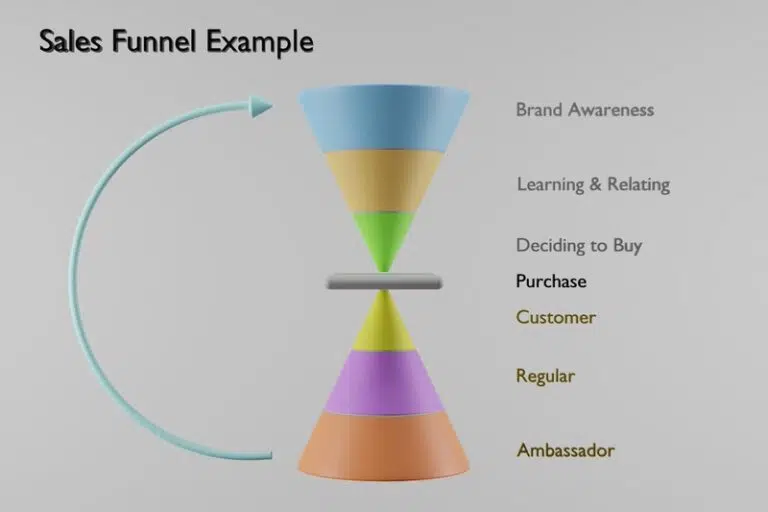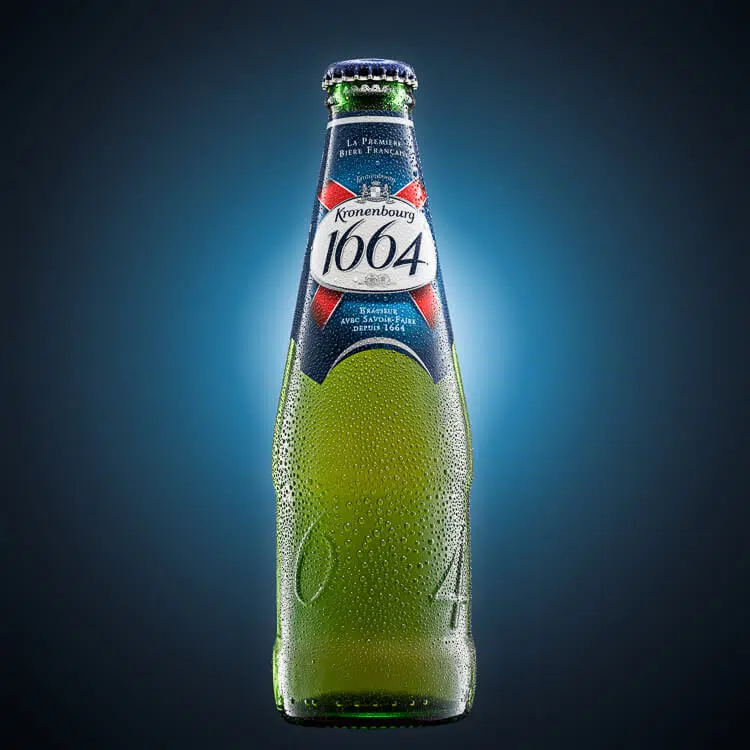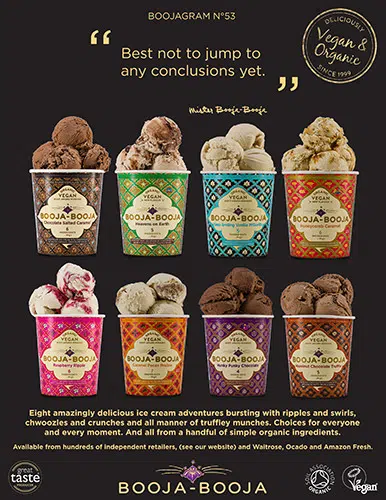The Purpose of Advertising
Advertising is all over the place. We can’t watch TV or listen to the radio for long without adverts interrupting us. Read a magazine or a newspaper and you’ll quickly find an ad after your attention. Go online and they are in banners, sponsored searches and links, acting as gateways to games and videos or popping up seemingly from nowhere. Go for a drive and you’ll see giant billboards, posters on bus stops, banners on vehicles and buildings. But, why?
It is everywhere we go, so what is the purpose of advertising? That might seem like an easy question to answer. But, maybe there are more nuances to delve into. For those in business, understanding advertising isn’t just a topic of curiosity. Rather, it can play a crucial role in our success. So, what is the role of advertising going to be for your business?
Surely it's Sales??
At the end of the day, the purpose of advertising is to increase sales, isn’t it? Without sales businesses die. Advertising has the important role of securing sales to keep our businesses alive. But, not every advert asks for an immediate response. Not all advertising has a big call to action asking for us to make a purchase. Some do, of course. We have all seen advertising banners with the words “Buy Now!” Equally, we have seen many that don’t. Does this mean that these others have missed the point?
Depending on the product, it might take rather more than seeing the odd advert to convince the customer to buy. Simply calling for a decision may well be part of the sales funnel. But, there are other elements to it as well and advertising also speaks to these.

Advertising can play a role at each stage of a sales funnel. Yes, it can be part of closing the deal. But there are many other ways in which advertising can be an effective ally. Of course, a sales funnel isn’t the only way to look at it. We might think of it in terms of a developing relationship that builds to the point of a sale taking place (and then hopefully continues on to further sales and recommendations). Yes, there will also be similarities and crossover with marketing. They aren’t perfectly neat, sealed boxes with their own special space. I think its more helpful to think of advertising and marketing overlapping each other.
Persuading People
One view of the purpose of advertising that has been around a long time is that it is there to persuade people to buy. It is effectively a salesperson that is able to work all day every day in many places at once. It works by convincing people by rational argument that they should purchase the product. So, detailed text and a call to action are to be expected.
This view of advertising assumes that logical reasons are the most relevant and powerful tools at our disposal. The merits of our products and how they solve the customer’s problems should be able to overcome objections and result in sales. Clearly there is a lot to be said for this. Especially for new technology, for example, the customer might need to be told how it could benefit them for them to see its relevance. Similarly, comparisons with other products can help them see how yours might be a better or more comprehensive solution.
However, rational persuasion is not the only factor that drives us to buy.
Subconscious Seduction
Subliminal advertising has a bad reputation. It makes us worry that we are being manipulated. These fears translated into a suspicion of any kind of subconscious messages to the point that rational persuasion became the dominant model. However, despite our misgivings, subconscious communication is actually a regular part of everyday life. We don’t necessarily consciously notice things like body language and tone of voice. But, they have a big effect on how we understand a message.
Our brain makes connections based on things that it has already encountered. So, when we see a close up of a cool beer we might already start to want one because we remember the experience of drinking one on a previous occasion. We associate sunshine and sand with holidays, so this might make us feel positive towards products styled in that type of scene. The effects aren’t universal to all of us. Some might not like beer for a start! But, if enough of us have good memories and emotions triggered by an advert then it can increase the likelihood that sales go up.
Automatic Associations
There are many examples of how we perceive things subconsciously. Much of it is cultural conditioning that acts as a set of filters that we view the world through. This can be from something as simple as colour associations, e.g. red for danger, green for fresh, etc. Or, it might be expectations for how people behave and what they wear. On a more complex level it could encompass what we might call “rituals” or “traditions”. A whole chain of events can be engrained in our minds as “the way things are done”. So, we interpret according to a wide array of preconceived ideas and subconscious filters that we have learned and developed.
Advertising can play along with or seek to subvert those associations. It can analyse a culture and use its findings to help clarify its message. All of the elements of advertising, whether photography, audio or other medium can make use of the symbols that we have encoded. The question then is whether we feel we are crossing any ethical boundaries by using them. Is our message “true” or consistent? Or, are we trying to manipulate and pull the wool over people’s eyes?
Encoding Ethically
In some areas of life we are seeing a growth in the understanding and use of subconscious messages. For example, Neuro-Linguistic Programming (NLP) is a tool that makes use of the subconscious aspects of communication. Some find it helpful and use it positively to connect with others better. But, it can potentially be abused and used to manipulate others. Attempting to ban subconscious communication just isn’t possible. We make the associations whether we like to or not and whether we realise it or not. Banning subconscious communication would be like banning speaking. Just because something can be used for ill purposes doesn’t mean it should go altogether.
Careful study and responsible use can make any communicative tool a potential asset. A key purpose of advertising is getting a message across. So, maybe we should embrace more ways of doing so?

Developing Desire
Out of our learned behaviours and experiences we develop preferences. Things that have a positive association from the past can influence our future choices. Understanding the cultural symbols that carry those positive associations means we can use them to put people’s minds at ease in our advertising. Showing vibrant, natural colours for food can make it look more appetising. Flaky, light pastry might be accepted as a good thing. So, an image like the one above might be good for selling a new product using already known positives.
Our desire for a product often grows without any verbalised rationale whatsoever. There’s no need for text to explain the colour of the vegetables to us. We don’t need a voiceover to tell us that the droplets of condensation on the bottle below make it look cold. We are often seduced on a subconscious level by the signals that our brains pick up and the associations that they trigger.

If we are trying to sell beer, for example, then developing desire for the product is a vital part of the purpose of advertising. This is true of many products. Communication can be more effective when it speaks through visual symbols rather than words. This isn’t rational persuasion, but it too sells. Advertising has a part to play in how we respond to and think about products, regardless of whether we are in a position to buy or not.
Building a Brand
Brands are big money. If people know, like and trust your brand then you are on to a winner. Establishing a brand takes time and money. It involves being noticed and remembered. Even little things can undermine the overall picture of a brand, so the details really matter. Advertising is an important ally if you want to build a brand. From the customer’s first interaction with it to their hundredth purchase, advertising helps to create awareness of brands and keep them front of mind.

Awakening Awareness
One purpose of advertising is to show the world that our products exist. If people aren’t aware of the product then they aren’t going to consider buying it. Advertising can address this first part of the sales funnel. For example, take a look at the advert for Booja-Booja below that shows off their ice cream range.

The text and images work together to get across the message that Booja-Booja offer 8 flavours of ice cream and where you can buy them. It doesn’t push for an immediate decision to buy. It doesn’t assume that you already know what products they offer. This kind of advert can be useful for educating potential new clients and raising awareness further with those that already buy their other products (chocolates).
Finding Fame
It is advertising’s job to help make the product or brand famous. Not every product will become a household name. But, if sales are to grow then more people need to know about it. On one level, advertising is like PR. It is there to put across a positive impression and to fend off negativity. Sometimes the product will do well with a general degree of fame. Others may need to be more well known in a particular section of society in order to succeed. So, advertising can help create and manage fame with the right people.
Regular Reminders
Having a moment of fame is rarely enough to sustain a business. For a brand to become well established and to continue to grow it will need to ensure that it doesn’t get forgotten. One role of advertising is keeping a product or brand front of mind. It gives regular reminders that we are still here.

Expert Educator
Adverts can also be used to educate and inform people. Sometimes organisations use them as a way to convey information to the public or to educate them about particular issues. In recent times governments have used advertisements to spread information about the pandemic. Charity adverts are often a combination of information and appeal. The request to “buy” (or, in this case, donate) follows footage that is designed to inform and move us to action. This may, of course, have aspects of persuasion through rational discourse as well as playing on emotional triggers.
Although in these respects the purpose of the advertising might be said to be education, this is rarely where its final goal lies. The subsequent aim beyond education is motivation to action. We want a response. At the very least we want to provoke thought.
Entertaining Everyone
Surely we’re not providing entertainment through advertising? For one thing, we know that people expect adverts to try to sell something. Secondly, if we are an insurance company or making widgets then our product quite clearly isn’t entertainment. So, can we really claim that the role of advertising is to entertain?
Although making people laugh or being generally entertaining might not be our primary goal, it nevertheless has a place for a number of reasons. Firstly, if we enjoy an advert then we are likely to carry across positive associations to the product. Secondly, we may remember something more easily if it is entertaining . Thirdly, If we like it enough we may even look out for the next instalment. Fourthly, it can help to break down our defences that we as viewers often put up when we anticipate advertising and being sold to. Fifthly, one of those key “water cooler” topics of conversation is entertainment – “did you see….?” If we can get people talking about our adverts then they are certainly memorable and keeping a presence for us in the consumer’s mind.
All of this helps to explain why some brands create unusual and often amusing characters and scenes. Talking animals, robots or ridiculous characters can become synonymous with a brand. Their catchphrase may lodge more readily under the guise of entertainment than it would for a serious advert. Somehow, a well crafted character or a narrative sequence can disarm us and draw us in. Perhaps it is in part because we all like stories?
The Role of Advertising in Developing Relationships
If the sales funnel is fundamentally about forming relationships with customers then could we say that the role of advertising is to develop relationships? As people progress through the sales funnel their relationship with the brand deepens. Advertising plays a part at each stage, from initial awareness to them becoming brand ambassadors who themselves spread the word. So, in that sense, advertising helps to shape the relationship.
For some products, we might encounter adverts more frequently than other interactions with the brand. In which case, they may have a stronger formative role. Even if we only rarely see or hear an advert, it still forms part at least of our impression of the brand. Each point at which someone has contact with an aspect of the brand the relationship can be influenced one way or another. So, how nurturing are our adverts?

Keep Consumers Consuming?
At the end of the day, aren’t we still back to the connection with sales? Isn’t the role of advertising to keep consumers buying? If sales figures drop following an advertising campaign then it is likely to be axed. Despite all the niceties of wanting to connect with people in ways that are meaningful for them, if adverts don’t help keep sales up then they will be binned. So, shouldn’t we just go back to the beginning and say it is all about sales after all?
On the other hand, if we are communicating something in a way that people connect with and about something they care about then wouldn’t our sales figures go up too? If we are genuinely connecting people with brands then might we not reasonably expect sales to increase? Perhaps decreasing sales are in fact a sign that our advertising is not entertaining, easy to understand, rationally persuasive, connecting with our culture and creating desire.

The Purpose of Advertising - Communication?
Asking one advert to accomplish all of the things we’ve looked at above is surely asking too much. Even an advertising campaign might struggle to cover all of these bases. So, I would suggest that we see advertising as part of the ongoing communication with our customers and potential customers. It can be part of the beginning of the relationship. Or, it can help to broaden and cement in the relationship. When it goes wrong, it can also damage the relationship either partially or completely. Without the relationship there will be no sales.
The role of advertising is to communicate and through that communication to foster a relationship that leads to sales. At times it may need to inform. Occasionally it may need to eat humble pie. It may need to make us laugh or cry, engaging with our emotions and reasoning with us. Advertising draws on and fuels the culture we live in.
If you would like to understand more about how images work in advertising then you might like to read my introduction to the language of images.
Please do get in touch if you would like help with creative advertising images.
© Joe Lenton, January 2022
